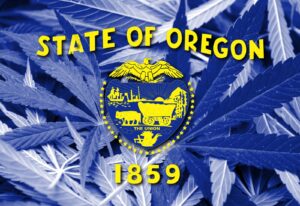The Oregon Liquor Control Commission (OLCC) finally issued its draft rules yesterday for Oregon’s recreational marijuana program. The rules weigh in at a hefty 70 pages and you can find them here. In an accompanying release, the OLCC cautioned that “draft rule language is subject to change and should NOT be used as basis for making business decisions.” So there is that. And here is the bottom line: if you review these rules and you have watched this process closely, you will be treated to no big surprises, although some large gaps remain.

Starting with the basics, the OLCC will be licensing four types of primary licensees as part of Oregon’s recreational marijuana program: producers (growers), processors, wholesalers and retailers. A single applicant can apply for and receive all of these licenses and be vertically integrated. As rumored, the OLCC will also be licensing laboratories, marijuana handlers (they get a “permit”) and requiring a fee for “packaging and labeling preapproval.” The application fee for each of these licenses is currently listed as “[blank].” Yes, it is blank!
Applications can only be submitted online and interestingly, there is no language to the effect that “applications will be reviewed in the order received,” as the Oregon Health Authority famously provided in its initial review of dispensary applications a few years back. As a part of the OLCC application process, most individuals will have to supply information or fingerprints for a criminal background check and complete an Individual History Form. This is also no surprise.
Every application made by an entity is required to have at least one “legitimate owner.” This is the individual applicant or legal entity which owns at least 51% of the business to be licensed; or, it is one or more individual applicants (or applicant legal entities) that collectively own at least 51% of the business to be licensed. “Ownership” includes having a direct or indirect ownership of the shares, membership interests, or other ownership interests of the business to be licensed. Ownership does not necessarily include: (1) preferential rights to distributions based on return of capital contribution; (2) options to purchase an ownership interest that may be exercised in the future; (3) convertible promissory notes; or (4) security interests in an ownership interest. If these rules hold, we will likely be seeing a ton of (1), (3) and (4) for non-Oregon residents who want a piece of the action. If these rules hold, Oregon will remain a very good place for out-of-staters looking to get involved in the cannabis industry.
In addition to listing at least one “legitimate owner,” the OLCC also will require that an application “include the names and other required information for all individuals who are applicants …. and [also] who are not applicants but who have a ‘financial interest’ in the business…”. An applicant, in turn, is described as “any individual or legal entity that has a financial interest in the business for which licensure is sought and who is directly involved in controlling the ordinary course of business ….”. This includes most everyone but employees, independent contractors, as well as some shareholders, directors, LLC members and limited partners and passive investors. If the applicant is an individual (and not an entity), the applicant must be 21 years of age with two years of Oregon residency (this latter requirement sunsets in 2020).
All applications, whatever the license type, will have to provide a map or sketch of the premises proposed for licensure, a floor or plot plan, proof of lawful possession of the subject premises (meaning a deed or lease), and a business operating plan that covers several things, including security, employee qualifications and training, transportation of product, and dealing with minors. The OLCC will inspect each premises before issuing a license and must receive a favorable land use compatibility statement from the city or county for the proposed premises, as well.
If you wish to be a processor or producer, still more requirements remain. Processors will have to provide (1) one of several endorsements related to the proposed processing activity; (2) a description of the type of products to be processed; and (3) a description of equipment to be used, including any solvents, gases, chemicals or other compounds used to create extracts or concentrates.
Producers will have to provide (1) a report describing the applicant’s estimated electrical and water usage; (2) a description of the growing operation, a description of equipment to be used in the production, and whether production will be indoor, outdoor or both; (3) proof of a water right or a statement that water is supplied from a public water system or from an irrigation district; and (4) the proposed canopy size and tier of their crop with a designation of the canopy area within the licensed premises.
What is the allowed canopy size? The answer is “__[blank]__” (!). This means that although we are less than three months away from licensing, and although people are making very difficult choices on buying and leasing property, we still have no real indication as to how big an area can be used for your cannabis crops. All we know is that these draft rules divide production into two main categories: indoor production and outdoor production. Each of these categories, in turn, is divided into two tiers: Tier I (smaller) and Tier II (larger). Indoor and outdoor production will be allowed at the same licensed premises (“mixed cultivation”) and there is a ratio for calculating canopy size where that occurs. Current OMMP growers may apply for a producer license at the same location as a grow site; however, all growers producing marijuana at that address must be listed on the application.
Finally, all licensees must comply with general requirements as to signage, financial and business record keeping and other matters. And then there are myriad specific requirements for each license type (except wholesaler, for which there is no draft language, still). Those specific areas include, but are not limited to, security, health and safety (testing), packaging and labeling, seed-to-sale tracking, transportation and delivery, waste management, advertising, and rules for OLCC investigation and enforcement.
In sum, these are only draft rules and they are incomplete, but these rules constitute the best glimpse yet as to what the Oregon recreational marijuana program will look like. Final temporary rules are probably still a month or so away. One of my firm’s cannabis attorneys is on the state committee for wholesalers and he says that we should anticipate wholesaler requirements being made public “very soon.”
The next and perhaps only opportunity for citizen input in the form of oral testimony on these draft rules is this Friday, October 9 at 1pm at the OLCC headquarters. We of course plan to be there in full force.























